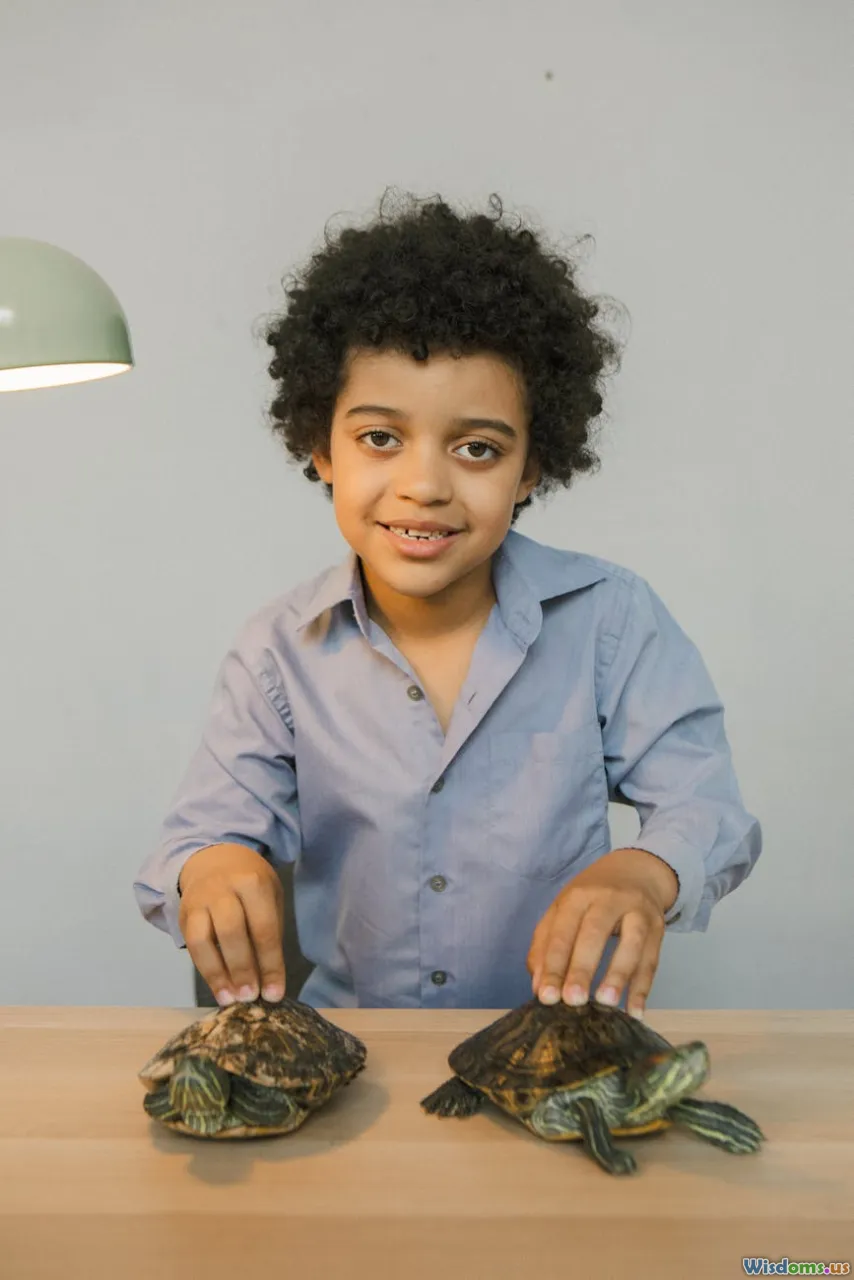
Teaching Kids Responsibility Through Pets
9 min read Explore how pets can teach children responsibility with practical tips, benefits, and real-life examples. (0 Reviews)
Teaching Kids Responsibility Through Pets
Introduction
Imagine a child eagerly welcoming a small furry friend into their life, eyes wide with excitement yet unsure of the tasks ahead. How does this tiny bond lead to lifelong lessons in responsibility? Teaching kids responsibility through pets is more than just having a cute companion—it’s a dynamic process that molds character, enhances empathy, and fosters independence. While children naturally feel affection toward animals, the structure and care that pets require can turn those feelings into meaningful habits and values.
In this article, we dive deep into the transformative power pets hold in nurturing responsibility among children. From practical methods to real-world examples and expert insights, you will gain a comprehensive understanding of how owning a pet can be an invaluable educational journey.
Why Teaching Responsibility Matters in Childhood
The Foundation of Life Skills
Children who learn responsibility early tend to develop stronger self-confidence and better decision-making skills. According to a 2019 study by the American Academy of Pediatrics, children who regularly engage in household tasks and pet care exhibit enhanced executive functions and emotional regulation. Responsibility is not just about completing chores; it’s about understanding the consequences of actions, developing persistence, and practicing self-discipline.
Pets as a Gateway to Accountability
Pets depend entirely on their owners, making them perfect 'living lessons.' Whether it’s feeding a dog on schedule or cleaning a hamster’s cage, these routines place the child at the helm of someone else's well-being. The stakes feel real—this isn't about winning a game or finishing homework, but the happiness and health of a living creature.
Take Sarah, a 9-year-old girl from Denver who has been caring for her golden retriever puppy since age six. Her mother shares, “Caring for Bella transformed Sarah’s attitude toward responsibility – she takes schoolwork seriously, and she has become more mindful overall.”
Core Benefits of Teaching Responsibility Through Pets
1. Cultivates Empathy and Compassion
When children care for pets, they learn to recognize needs beyond their own. A 2016 study in the Journal of Applied Developmental Psychology highlights that children with pets often display higher empathy scores compared to those without pets. They begin to notice subtle signals—like a cat’s meow signaling hunger or a dog’s pacing indicating restlessness—training their emotional awareness.
2. Establishes Routine and Time Management
Pets require consistent feeding, exercise, and grooming — daily commitments that foster routine. For a child, learning to prioritize these tasks alongside schoolwork teaches time management skills. For example, setting 'feeding alarms' or marking vet appointments on a calendar creates organizational habits.
3. Encourages Accountability and Consequential Thinking
If a child forgets to feed the pet, the effects are immediate—a hungry pet, possible vet visits, or a messy environment. These clear consequences help children understand the impact of their responsibilities. Over time, this nurtures accountability—an essential skill in school and later workplace settings.
4. Boosts Self-Esteem and Sense of Achievement
Successfully caring for a pet and seeing tangible results, like a happy dog wagging or a clean cage, gives children confidence in their abilities. Psychologist Dr. Karen Young notes, “Children thrive when they overcome challenges through caregiving; pets provide incremental wins that reinforce self-worth.”
Practical Strategies for Parents and Caregivers
Choose an Age-Appropriate Pet
Not all pets equally suit young children. For toddlers, low-maintenance animals like fish or guinea pigs might work best. Elementary-aged children can handle tasks involving small mammals or even a gentle dog with parental supervision. Research the pet's size, care needs, and temperament before bringing one home.
Establish Clear Care Responsibilities
Create a checklist or a responsibility chart outlining daily, weekly, and monthly pet care duties. For example:
- Daily: Feeding, providing fresh water, exercise
- Weekly: Grooming, cage cleaning
- Monthly: Vet check-ups, nail trims
This tangible framework helps children visualize their commitment and track progress.
Incorporate Learning Moments
Use pet care to teach related concepts such as biology (how an animal’s body functions), health (importance of nutrition), and social skills (patience and gentleness).
For instance, explain why a dog needs walks not only for exercise but also for mental stimulation, or how cats communicate through body language.
Supervise and Support Without Taking Over
While autonomy is key, younger children especially will require guidance. Encourage open dialogue about struggles or questions the child might have. Celebrate successes, and if mistakes happen (e.g., forgetting a duty), discuss how to improve without punishment.
Leverage Technology
Modern apps can assist children in managing pet care. For example, apps that send reminders or offer educational mini-games about animal care can make responsibility fun and interactive.
Real-World Examples and Insights
Educational Programs
Some schools and community centers run "Class Pets" programs, where responsibility rotates among students who care for classroom animals. Studies suggest these programs boost cooperative learning and shared responsibility.
Families Inspired by Rescue Stories
In many homes, adopting rescue pets not only saves an animal but also teaches children about compassion for those in need. Taking part in the adoption process bonds children emotionally and instills a stronger sense of care.
Interview with a Child Psychologist
Dr. Emily Rogers, a child psychologist, notes, “Pets ground children in the present moment. Responsibility toward pets enhances emotional regulation and teaches children to be reliable over extended periods.”
Her sessions often recommend introducing pets as a practical tool in behavioral development.
Conclusion
Teaching kids responsibility through pets is an engaging, real-world education that strengthens character and fosters lifelong skills. From empathy to time management, children receive hands-on lessons wrapped in love and fun. With careful pet selection, structured routines, and supportive parenting, children can transform the joy of an animal companion into a foundation of accountability and personal growth.
If you’re contemplating introducing a pet into your family, remember: beyond the wagging tails and purring companionship lies a powerful opportunity to instill responsibility that will benefit your child across all dimensions of life.
The next step? Engage your child in pet care planning today and watch as they flourish with newfound confidence and maturity.
Sources:
- American Academy of Pediatrics (2019), "Child Development and Responsibility"
- Journal of Applied Developmental Psychology (2016), "Pet Ownership and Empathy in Children"
- Interview with Dr. Karen Young, Child Psychologist
- Interview with Dr. Emily Rogers, Child Psychologist
Author's note: Integrating pets into childhood isn’t just a way to have fun—it’s a smart strategy in nurturing well-rounded, responsible future adults.
Rate the Post
User Reviews
Popular Posts





















